-
 Bitcoin
Bitcoin $119800
1.38% -
 Ethereum
Ethereum $3873
3.25% -
 XRP
XRP $3.247
1.85% -
 Tether USDt
Tether USDt $1.001
0.02% -
 BNB
BNB $840.4
5.94% -
 Solana
Solana $190.0
2.55% -
 USDC
USDC $1.000
0.03% -
 Dogecoin
Dogecoin $0.2433
2.69% -
 TRON
TRON $0.3197
-0.05% -
 Cardano
Cardano $0.8367
1.39% -
 Sui
Sui $4.327
3.11% -
 Hyperliquid
Hyperliquid $44.00
0.31% -
 Stellar
Stellar $0.4461
1.76% -
 Chainlink
Chainlink $19.25
4.61% -
 Hedera
Hedera $0.2941
3.90% -
 Bitcoin Cash
Bitcoin Cash $598.4
6.89% -
 Avalanche
Avalanche $26.19
4.67% -
 Litecoin
Litecoin $115.1
0.50% -
 Shiba Inu
Shiba Inu $0.00001427
1.55% -
 Toncoin
Toncoin $3.379
2.01% -
 UNUS SED LEO
UNUS SED LEO $8.966
-0.16% -
 Ethena USDe
Ethena USDe $1.001
0.02% -
 Uniswap
Uniswap $11.04
4.16% -
 Polkadot
Polkadot $4.239
2.00% -
 Monero
Monero $324.6
0.36% -
 Bitget Token
Bitget Token $4.672
2.46% -
 Pepe
Pepe $0.00001294
2.69% -
 Dai
Dai $0.0000
0.01% -
 Cronos
Cronos $0.1443
2.71% -
 Aave
Aave $302.9
1.98%
What is the redemption mechanism of USDT?
USDT redemption, while aiming for a 1:1 USD peg, involves requesting through approved exchanges, facing varying processing times, and lacks complete transparency regarding reserve composition, creating inherent risks for investors.
Feb 28, 2025 at 04:31 am
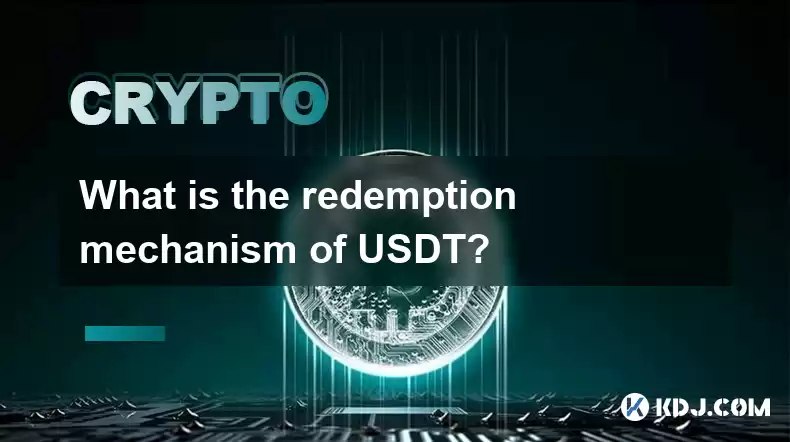
What is the Redemption Mechanism of USDT?
Key Points:
- USDT's redemption mechanism is designed to maintain a 1:1 peg with the US dollar. However, the specifics of this mechanism have evolved and are subject to scrutiny. This article will detail the complexities involved.
- The process involves submitting a redemption request through authorized channels, typically involving a Tether-approved exchange or partner.
- Transparency and auditability of Tether's reserves remain a significant point of contention and are crucial to understanding the true effectiveness of the redemption mechanism.
- Variations in redemption processes exist depending on the volume and the chosen redemption partner.
- Understanding the risks associated with relying on USDT's peg and the limitations of the redemption process is vital for any investor.
Understanding USDT Redemption: A Deep Dive
The redemption mechanism of USDT, Tether's dollar-pegged stablecoin, is a multifaceted process that aims to ensure its value remains consistently tied to the US dollar. While Tether claims a 1:1 backing of its USDT tokens with reserves, the exact nature of these reserves and the ease of redemption remain subjects of ongoing debate and scrutiny within the cryptocurrency community. The process is not as straightforward as simply exchanging USDT for USD at any time and place. Instead, it involves a series of steps and considerations.
- Initiating a Redemption Request: The first step involves initiating a redemption request. This is typically done through a Tether-approved exchange or a designated partner. Not all exchanges or platforms support direct USDT redemption. The chosen platform will dictate the specific procedure. You will need to possess a sufficient balance of USDT in your account on the chosen platform. The process often requires completing specific forms and submitting requests through designated channels, verifying your identity (KYC/AML procedures are common), and specifying the amount of USDT you wish to redeem. The waiting time for processing the request can vary depending on the platform and the volume of pending requests. This initial step emphasizes the reliance on third-party intermediaries, which introduces a level of indirectness to the process, potentially affecting speed and efficiency. Large redemption requests may necessitate prior communication with the exchange or partner to arrange for the smooth processing of the transaction. The platform will also verify your identity to prevent fraud and money laundering. This verification process can range from simple document submission to more extensive background checks depending on the platform's policy and regulatory requirements.
- Verification and Processing of the Request: Once the redemption request is submitted, the platform will verify the request. This includes verifying your identity, the availability of sufficient USDT in your account, and compliance with any relevant regulations. This verification step serves as a crucial checkpoint in the redemption process, aiming to prevent fraudulent activities and ensure the legitimacy of the request. The verification process can take anywhere from a few hours to several days depending on the platform's workload and the complexity of the verification process. If the verification process uncovers discrepancies or issues, the redemption request may be rejected, requiring you to re-submit the request with the necessary corrections. During this phase, the platform communicates with Tether to confirm the availability of reserves to fulfill the redemption request. This communication ensures the smooth transfer of funds and prevents any delays or disruptions due to insufficient reserves.
- Transfer of Funds: After the verification process is complete, the platform processes your redemption request and initiates the transfer of the equivalent USD amount to your designated bank account or other specified payment method. The method of transfer can vary depending on the platform's policies and your location. Some platforms may offer wire transfers, while others may use alternative payment methods like ACH transfers. The timeframe for receiving the funds varies depending on the chosen payment method and the processing times of the involved financial institutions. Wire transfers are generally faster, but they often involve higher fees compared to other payment methods. Processing times can be affected by factors such as bank holidays, weekends, and technical issues. This step is crucial in demonstrating the actual liquidity and the ability of Tether to honor its 1:1 peg promise. Delays or failures in this step could signal problems with the stability of the peg and the reliability of the redemption mechanism.
- Confirmation and Completion: Once the USD equivalent is transferred to your designated account, the redemption process is considered complete. You will receive a confirmation notification from the platform indicating the successful transfer of funds. It is crucial to verify the received amount against the redeemed USDT amount to ensure accuracy. Any discrepancies should be reported immediately to the platform for investigation and resolution. The entire process from initiating the request to receiving the funds can take anywhere from a few hours to several business days, depending on various factors, including the platform's processing times, verification procedures, and the chosen payment method. The efficiency and speed of the process are crucial indicators of the effectiveness of Tether's redemption mechanism and its ability to maintain the stability of its peg. Transparency and readily available information regarding the process and timelines would enhance user confidence.
- Transparency and Auditability Issues: A critical aspect influencing the perception and trust surrounding USDT's redemption mechanism is the lack of complete transparency regarding the composition and auditability of Tether's reserves. While Tether publishes periodic attestations, concerns remain about the true nature of the backing assets and their liquidity. The lack of independent and comprehensive audits has fuelled skepticism, raising questions about the reliability of the 1:1 peg and the effectiveness of the redemption mechanism. This lack of transparency creates uncertainty among users, impacting their confidence in the stability of USDT and their willingness to participate in the redemption process. Enhanced transparency, including detailed breakdowns of reserves and independent audits, would significantly improve the credibility of the redemption mechanism.
FAQs:
Q: Can I redeem USDT directly from Tether?
A: No, Tether doesn't typically offer direct redemption to individual users. Redemption is usually facilitated through approved exchanges or partners.
Q: What are the fees associated with USDT redemption?
A: Fees vary depending on the exchange or partner used, and they can include transaction fees, wire transfer fees, or other processing charges. Check with your chosen platform for specific details.
Q: How long does it take to redeem USDT?
A: The redemption process can take anywhere from a few hours to several business days, depending on the platform, verification procedures, and chosen payment method.
Q: What happens if Tether doesn't have enough reserves to fulfill redemption requests?
A: This is a crucial risk associated with USDT. If Tether lacks sufficient reserves, it could lead to delays or even the inability to fulfill redemption requests, potentially causing the peg to break.
Q: Are there any limitations on the amount of USDT that can be redeemed?
A: Yes, exchanges and partners may impose limits on the amount of USDT that can be redeemed at any given time, particularly for large-volume redemptions.
Q: What happens if my redemption request is rejected?
A: If your redemption request is rejected, you'll typically receive a notification explaining the reason for rejection. You may need to address the issues and resubmit the request.
Q: Is the redemption process the same for all exchanges?
A: No, the specific process may vary depending on the chosen exchange or partner. Each platform has its own procedures and requirements.
Q: What are the risks associated with holding USDT?
A: The main risk is the potential for the peg to break due to insufficient reserves or other unforeseen circumstances, resulting in a loss of value. The lack of complete transparency regarding Tether's reserves also contributes to the inherent risk.
This detailed explanation aims to provide a comprehensive understanding of the USDT redemption mechanism, emphasizing the complexities and associated risks involved. Remember that the information provided here is for educational purposes and should not be considered financial advice. Always conduct your own thorough research before making any investment decisions.
Disclaimer:info@kdj.com
The information provided is not trading advice. kdj.com does not assume any responsibility for any investments made based on the information provided in this article. Cryptocurrencies are highly volatile and it is highly recommended that you invest with caution after thorough research!
If you believe that the content used on this website infringes your copyright, please contact us immediately (info@kdj.com) and we will delete it promptly.
- Tether Gold's Meteoric Rise: Market Cap and Soaring Gold Demand
- 2025-07-28 10:30:11
- Reddit, Crypto, and Altcoins: Navigating the Hype in 2025
- 2025-07-28 10:30:11
- Bitcoin, Altcoin, Volume Surge: Decoding the Crypto Market's Latest Moves
- 2025-07-28 10:50:20
- Bitcoin, Altcoins, and 2024 Targets: A NYC Perspective
- 2025-07-28 10:50:21
- Moo Deng Meme-Coin Mania: ROI or Just Hype?
- 2025-07-28 10:55:13
- Ethereum, Injective, and Tokenized Stock: A New Era in DeFi?
- 2025-07-28 11:10:12
Related knowledge
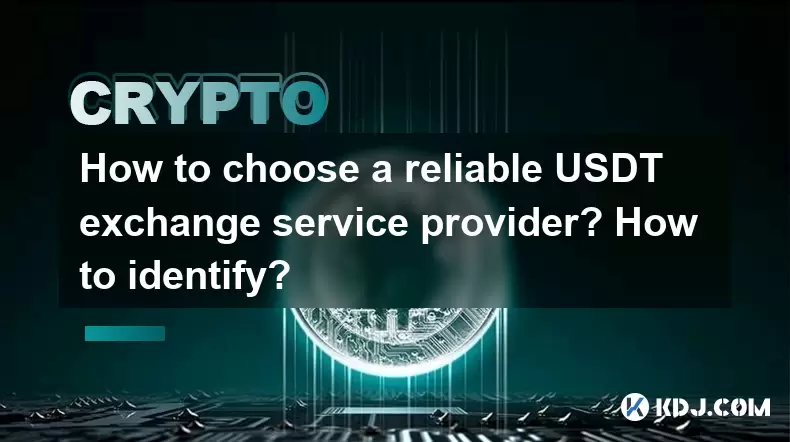
How to choose a reliable USDT exchange service provider? How to identify?
Jun 12,2025 at 03:15pm
Understanding the Role of USDT in Cryptocurrency TradingUSDT (Tether) is one of the most widely used stablecoins in the cryptocurrency market. It is d...
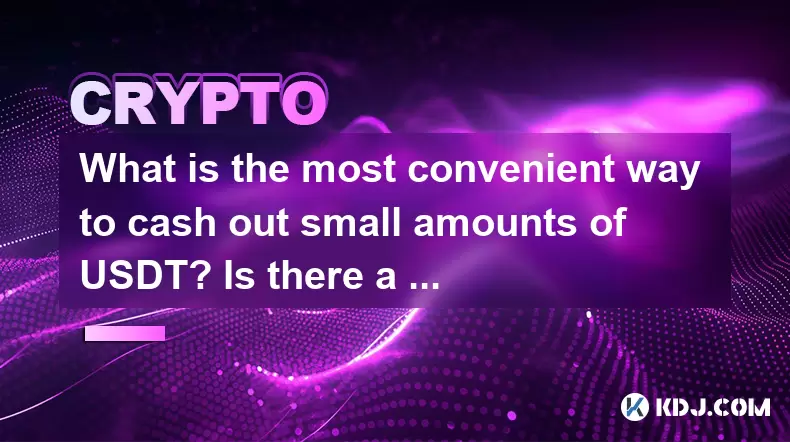
What is the most convenient way to cash out small amounts of USDT? Is there a shortcut?
Jun 11,2025 at 11:00pm
Understanding the Need to Cash Out Small USDT AmountsCashing out small amounts of USDT can be a challenge for many crypto users. Traditional methods o...
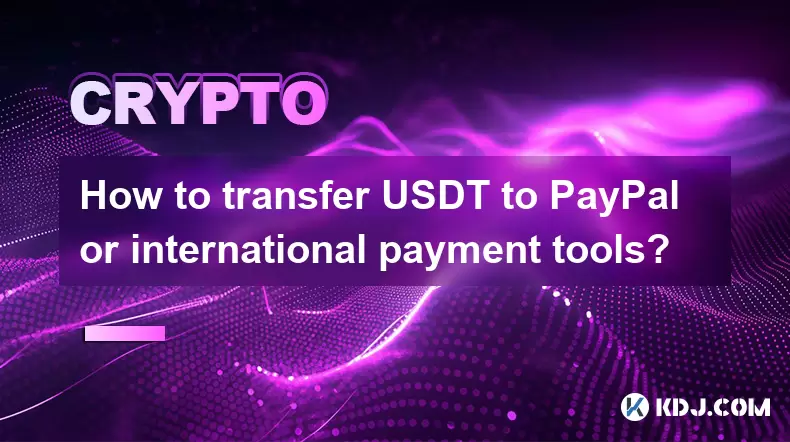
How to transfer USDT to PayPal or international payment tools?
Jun 15,2025 at 05:28am
Understanding the Basics of USDT and PayPal IntegrationUSDT (Tether) is a stablecoin pegged to the US dollar, offering blockchain-based value transfer...
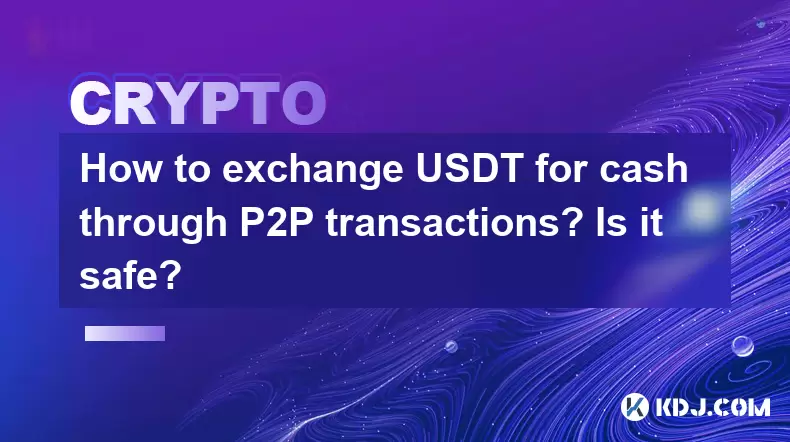
How to exchange USDT for cash through P2P transactions? Is it safe?
Jun 18,2025 at 07:56am
Understanding USDT and P2P TransactionsTether (USDT) is a stablecoin pegged to the value of the US dollar, making it a popular choice for users who wa...
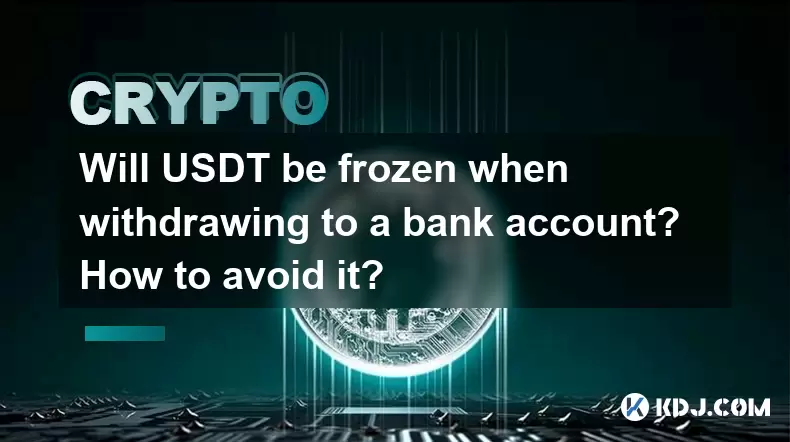
Will USDT be frozen when withdrawing to a bank account? How to avoid it?
Jun 15,2025 at 10:03am
Understanding USDT Withdrawals and Bank Account Freezing RisksWhen users decide to withdraw USDT (Tether) to a bank account, one of the most common co...

How to avoid risks when exchanging USDT for cash? What are the pitfalls?
Jun 11,2025 at 08:14pm
Understanding the Risks of Exchanging USDT for CashWhen exchanging USDT (Tether) for cash, users must be aware of the potential risks involved. As a s...

How to choose a reliable USDT exchange service provider? How to identify?
Jun 12,2025 at 03:15pm
Understanding the Role of USDT in Cryptocurrency TradingUSDT (Tether) is one of the most widely used stablecoins in the cryptocurrency market. It is d...

What is the most convenient way to cash out small amounts of USDT? Is there a shortcut?
Jun 11,2025 at 11:00pm
Understanding the Need to Cash Out Small USDT AmountsCashing out small amounts of USDT can be a challenge for many crypto users. Traditional methods o...

How to transfer USDT to PayPal or international payment tools?
Jun 15,2025 at 05:28am
Understanding the Basics of USDT and PayPal IntegrationUSDT (Tether) is a stablecoin pegged to the US dollar, offering blockchain-based value transfer...

How to exchange USDT for cash through P2P transactions? Is it safe?
Jun 18,2025 at 07:56am
Understanding USDT and P2P TransactionsTether (USDT) is a stablecoin pegged to the value of the US dollar, making it a popular choice for users who wa...

Will USDT be frozen when withdrawing to a bank account? How to avoid it?
Jun 15,2025 at 10:03am
Understanding USDT Withdrawals and Bank Account Freezing RisksWhen users decide to withdraw USDT (Tether) to a bank account, one of the most common co...

How to avoid risks when exchanging USDT for cash? What are the pitfalls?
Jun 11,2025 at 08:14pm
Understanding the Risks of Exchanging USDT for CashWhen exchanging USDT (Tether) for cash, users must be aware of the potential risks involved. As a s...
See all articles

























































































